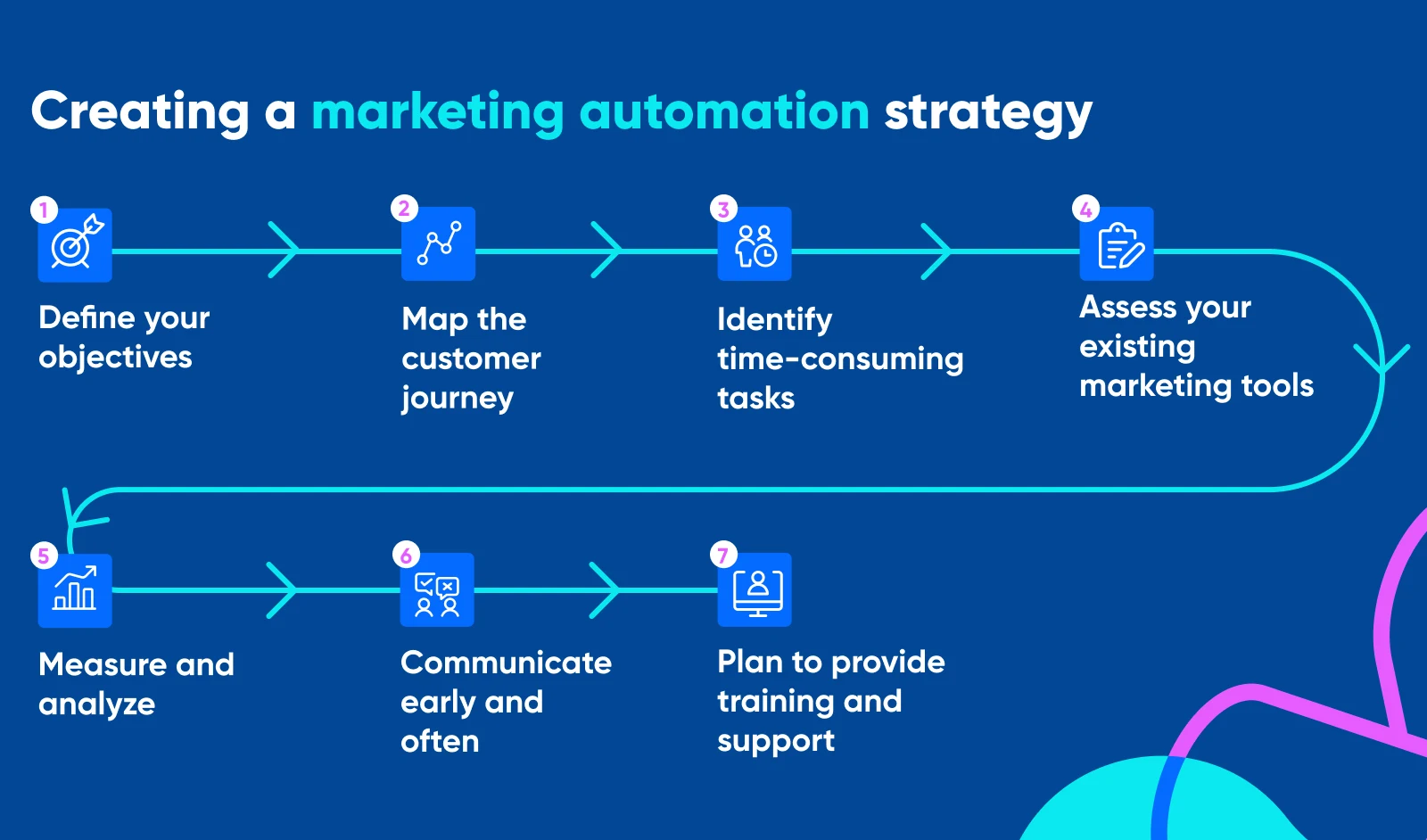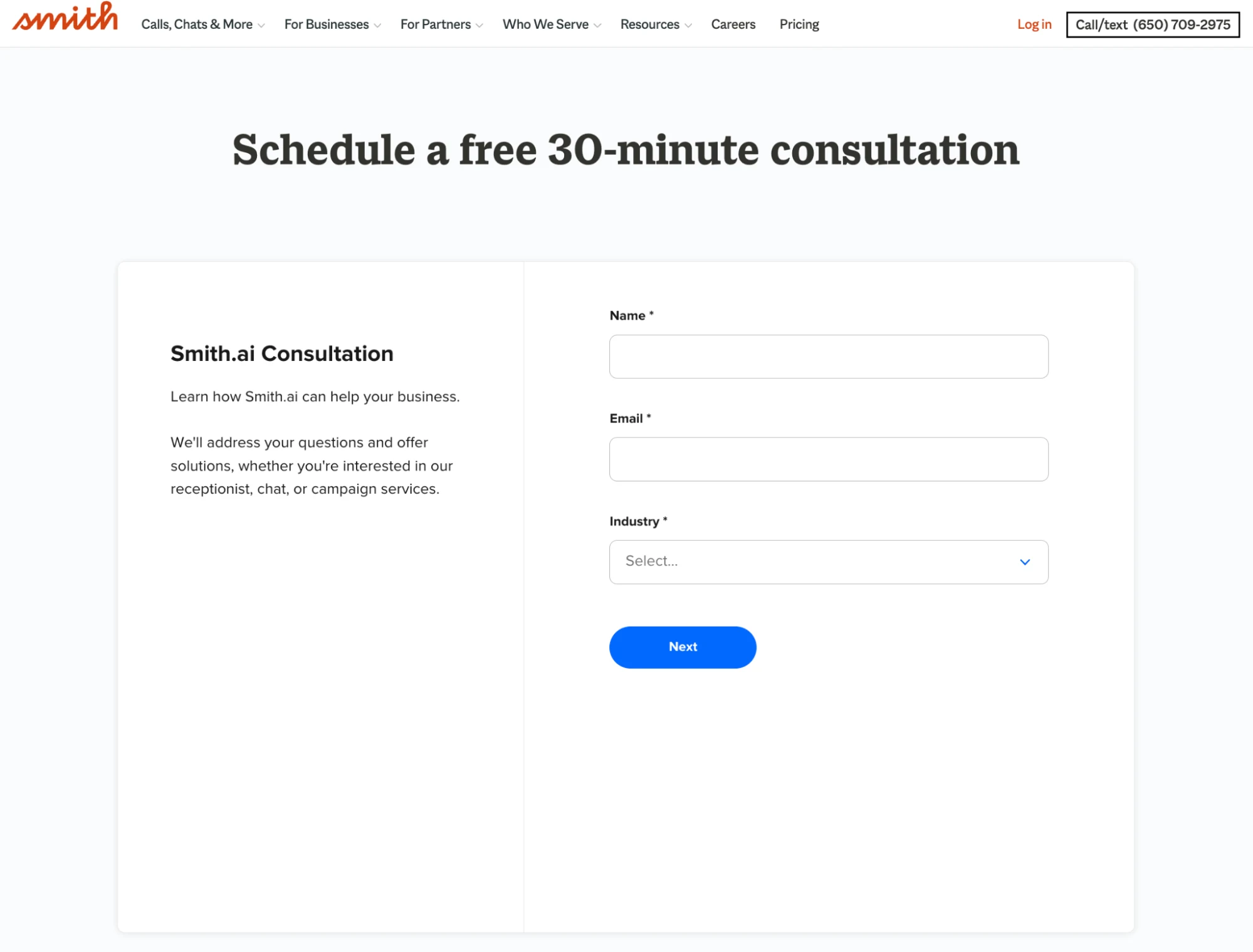Marketing
What is marketing automation? A 2023 guide for revenue teams
Discover marketing automation strategies to qualify more leads, close more deals, and get more done.
Rachel Burns
Jun 13, 2023
14 min read
Table of contents
What is marketing automation?
The average marketer spends six hours per day on manual, administrative, or operational tasks. That’s time away from creative or strategic tasks, like developing strategy, creating content, and crafting messaging.
What could you accomplish with those repetitive, time-consuming tasks off your plate?
In this guide, you’ll learn the benefits of marketing automation, when and how to create a marketing automation strategy, and what goes into a marketing automation tech stack. We’ll also share real-world examples of businesses using marketing automation to generate more leads, close more deals, and create a better customer experience.
Key takeaways:
Marketing automation helps teams increase productivity, personalize the customer experience, improve campaign measurement, and, ultimately, grow the business.
You can automate many time-consuming tasks — but strategy, creative work, and customer interactions still require a human touch.
Marketing automation helps align sales and marketing teams and makes it easier and faster for demand gen teams to deliver marketing-qualified leads (MQLs).
To build a marketing automation tech stack, choose tools that work well together.
Customer data plays a vital role in marketing automation, helping marketers understand their audiences and create targeted campaigns.
5 benefits of marketing automation
Organizations across industries and teams of all sizes can benefit from investing in marketing automation. Effective marketers are 46% more likely to use automation than those who reported having an ineffective strategy.
With marketing automation, your team can:
Get more done faster: Marketing automation takes time-consuming, repetitive tasks off your team's plate, so they can focus on strategy and high-value tasks.
Align marketing and sales: Automating lead tracking, scoring, and nurturing helps sales and marketing teams work together more smoothly. This means easier handoffs and better communication and collaboration.
Personalize the customer journey: Automation tools can segment leads based on demographics, behavior, or engagement level. With segmentation, you can deliver targeted and personalized content for more effective campaigns.
Measure your success: Marketing automation platforms with reporting and analytics give you insights into your campaign performance, so your team can make more strategic decisions — and show stakeholders the impact of your marketing efforts.
Grow your business: Automation helps you create a better customer experience, drive more conversions, and boost retention, ultimately increasing revenue for long-term success.
“Marketing automation allows us to communicate relevant information and messages at scale. In other words, it allows us to use data in a variety of ways — very intelligent data — to communicate with customers and prospects to drive value for the business.”
Koryn DelPrince
Manager, Lifecycle Marketing at Calendly
When should you invest in marketing automation?
Marketing automation can make life easier for marketing teams of all sizes — but you need to make sure you’ll see real ROI before investing time and money in new software. Here are some questions for marketing teams to consider before investing in marketing automation:
Do we have a clearly defined marketing strategy and goals?
Are we generating enough leads to justify the investment? Marketing automation is most helpful when there’s a high volume of leads to manage and nurture.
Are there repetitive marketing tasks to automate? Identify the tasks that take up a significant amount of your team's time, such as lead scoring or copying customer data between platforms. Can automation streamline these tasks and free up your team’s time?
Do we have a well-defined sales funnel? Automation is most effective when you can align it with the stages of your funnel.
Do we have a way to collect and organize customer data? Marketing automation needs data to segment leads, personalize content, and measure campaign performance.
Do we have the time and budget to implement and maintain marketing automation?
What’s our long-term plan for business growth? Consider how marketing automation fits into your long-term strategy, so you can choose software that can scale alongside your organization.
Calendly's State of Scheduling Report 2023
How to create a marketing automation strategy
“If you fail to prepare, you prepare to fail” — it’s a cliche for a reason. To make the most of marketing automation software, you need to implement it with a strategy in mind. Marketing automation systems should help your team drive results and meet broader organizational goals, rather than functioning in isolation.
To start building your marketing automation strategy, follow these steps:
Define your objectives: What do you want to achieve with marketing automation? How do those goals ladder up to overall business objectives?
Map the customer journey: Lay out every touchpoint — from a lead's first interaction with your business to conversion — to find gaps and time sucks that marketing automation can help solve. (More on this in a moment.)
Identify the most time-consuming tasks: What admin tasks take up the most time for your team? Seek out marketing automation tools that can automate and simplify this work.
Assess your existing marketing tools: Evaluate the software your team already uses. Do any of them have automation functionality? Can you integrate them with marketing automation tools? Determine which software you want to keep and if there are any gaps to fill with additional tools.
Measure and analyze: Decide how you’ll measure the success of your marketing automation strategy. What metrics matter most to your team — an increase in pipeline, higher campaign ROI, time savings? Quantitative goals inform the way you set up dashboards and reporting for your automation platforms.
Communicate early and often: Let stakeholders across the business know that you’ll be implementing new software and strategy. You’ll need buy-in from other teams to get things up and running smoothly. Keep those same stakeholders posted on results, insights, and data.
Plan to provide training and support: Even the simplest automation tools have a learning curve. Put a plan in place to train team members on the new tools, and look for software that has dedicated onboarding resources and documentation.
What parts of the customer journey can be automated?
Revenue teams can use automation to save time, stay organized, and drive business across the customer lifecycle.
When deciding whether to automate a task, consider how much creative or critical thought goes into that work. Repetitive, time-consuming tasks that don’t require complex decision-making are great candidates for automation. The most commonly automated activities include email marketing, social media, content management, paid ads, and landing pages.
Your team can use software to automate marketing processes like …
Lead generation: Get lead gen forms, pop-ups, and landing pages up and running quickly, rather than having to build each one manually. Many automation tools also integrate with customer relationship management (CRM) platforms to automatically add and assign leads to the right sales reps.
Lead nurture: Automate email campaigns, personalized content delivery, and lead scoring based on your organization’s criteria. By tracking engagement and behavior, automation helps your sales team focus on the most interested, qualified leads.
Segmentation and personalization: Automatically segment leads by demographics, behavior, or engagement level. This lets you deliver targeted, personalized content and offers to specific segments for more effective, relevant campaigns.
Content distribution: Schedule and automate content distribution across marketing channels like social media and email. Combined with segmentation, this ensures your content reaches the right audience at the right time.
Campaign management: Automation features like scheduling, segmentation, and analytics make managing multiple campaigns easier.
A/B testing: Compare different versions of marketing assets, such as subject lines or email templates. Then, automatically collect data to determine which version performs better, and optimize future campaigns accordingly.
Automation is less useful for tasks like interpreting data, developing strategy, and crafting messaging. Sure, you can automate data collection and analysis, but making strategic changes based on the results requires real-world experience and collaborative decision-making.
“Marketing automation lets us quickly pivot based on the data that we’re seeing. It’s an ever-evolving, ever-optimizing process; it's not just a set-it-and-forget-it type thing. We're constantly learning.”
Koryn DelPrince
Manager, Lifecycle Marketing at Calendly
Your marketing automation strategy should strike a balance between efficiency and human touch. Done right, marketing automation creates a better customer experience by freeing up time for quality customer interactions — not replacing them.
Aligning sales and marketing with automation
One thing marketing and sales teams agree on: The more MQLs, the better. Automating lead capture, qualification, scoring, and nurture makes it easier and faster for demand gen teams to send sales high-quality leads — and for those leads to get in touch with a sales rep ASAP.
To align these teams, you need to do two things:
Choose marketing automation software that works well with the tools your sales team already uses, like Salesforce. This simplifies the handoff from marketing to sales, creating a better experience for team members and customers alike.
Develop common goals and key performance indicators (KPIs) for sales and marketing. When these shared goals align with broader business objectives, team members will invest in and commit to implementing, using, and measuring marketing automation.
The stress-free approach to delivering more MQLs
Scaling marketing automation
As organizations grow, scaling marketing automation keeps things moving efficiently — but it can also present some challenges. You may need to upgrade to more powerful tools or integrate additional systems to handle higher volumes of leads and data.
Communication and collaboration also can become harder as businesses grow. When each team uses a different combination of tools, costs add up, information gets siloed, and customers encounter inconsistencies.
Stay ahead of these challenges by choosing software up front that’s easy to implement, offers onboarding and training resources, and scales as your organization grows. Encourage teamwork and open communication — especially when it comes to software and the customer experience.
Building a marketing automation tech stack
Marketing automation solutions run the gamut from basic free tools to pricey all-in-ones.
Types of marketing automation tools include:
CRMs (like Salesforce and Zoho CRM)
Email marketing automation (like Braze, MailChimp, and Eloqua)
Social media (like Sprout Social and Buffer)
Scheduling automation (like Calendly)
Some software offers a combination of functionalities, like email marketing, form building, lead management, and CRM features. Popular multi-purpose and all-in-one platforms include Marketo, Oracle Marketing Cloud, ActiveCampaign, and Pardot.
Don’t forget about integrations!
Integrations and automation go hand in hand. You can have great tools, but if they don’t play well together, you’ll miss out on the organization and efficiency that makes automation worthwhile. Look for tools that integrate with the rest of your tech stack — via direct integrations or task automation tools like Zapier — so you don’t have to reinvent the wheel whenever you add new software.
Calendly’s marketing automation tech stack
What does a real-life marketing tech stack look like? Here are some of the automation tools Calendly’s marketing and sales teams use — and why:
Braze (Email marketing): For communicating with existing users. We use it for emails like product launches, newsletters, webinar invites, and onboarding nurtures.
Marketo (Email marketing and lead management): For communicating with sales leads. We use it for lead scoring, lead nurture campaigns, educational content, and “talk to sales” CTAs.
Pendo (In-app messaging): Our Product and Marketing teams use it to generate messages within the Calendly product.
Salesforce (CRM): Salesforce is our source of truth when it comes to lead and customer info. It integrates with the rest of our tech stack (including Calendly!), so everything stays up-to-date and consistent.
Sprout Social (Social media): For social media scheduling, monitoring, reporting, and analytics.
Clearbit (Data enrichment): We use Clearbit to help us understand more about our leads and customers, like their industry, company size, and location. It also hides form fields when we already have the customer info, shortening the forms for a better user experience.
Salesloft (Sales engagement): For sales email sequences from Calendly reps to individual prospects.
Calendly (Scheduling automation): For scheduling and lead routing. We use Calendly links as CTAs in our sales emails, so prospects can schedule with sales ASAP. Automation workflows let us automatically send SMS and email reminders and follow-ups before and after events. We also use Calendly Routing to route qualified leads to the right booking page instantly.
“Why worry about sending a response within five minutes of a form fill when you can book a meeting with sales within five seconds of a form fill?”
Garrett Scott
Head of Demand Generation at Calendly
Marketing automation in practice
Signpost
The Signpost team worked hard to build a strong inbound marketing funnel. It worked: Lots of small business owners started asking about the marketing and CRM software.
But the influx of leads made it hard for the sales team to keep up. There was no process for re-engaging leads who fell out of the funnel. And to top it off, inconsistency between Signpost’s tools made it difficult to get new reps up to speed efficiently.
Julia Pan, Signpost’s Marketing and Sales Enablement Manager, knew they were missing out on chances to convert queries into new customers. She began adding reps’ Calendly links to automated lead nurture campaigns, which prospects receive after requesting a demo on Signpost’s website.
These emails sound like they’re written by an individual sales rep and include the rep’s Calendly link, so the lead can schedule a call right away.
It was a game-changer. In the past, a lengthy email back-and-forth followed to find a time for a demo. Now, with a single click, prospects can see the sales rep’s availability and book a mutually convenient time.
Calendly links were just as useful on follow-up emails sent just a few days after the first. “Now we can send a re-engagement email with a Calendly link in it, and if someone’s interest is reignited, there’s no barrier to reentry,” Julia says.
With automated email campaigns and Calendly links, Signpost’s reps were able to speed up the sales cycle and track the results with integrated analytics. (Read the full customer story here.)
Smith.ai
The Smith.ai sales and marketing teams knew that speed to lead was important, but “had not reached the technical ability to solve it,” Bryce Kropf, Senior Sales Manager at Smith.ai, said in a Calendly webinar. “I think that's one of the things that was so exciting about Calendly Routing for us … that literally was the last blocker.”
Smith.ai’s marketing automation tech stack includes Calendly and Salesforce. The virtual receptionist app uses Calendly forms on their site to immediately qualify and book leads.
Once a lead fills out the form, Calendly automatically routes them to a booking page based on their form responses, so they can schedule with the right sales rep immediately. The Smith.ai sales team doesn’t have to spend time assigning leads or looking up account owners manually.
Because Calendly integrates with Salesforce, Smith.ai can match known leads or existing customers directly to their account owner's booking page, a Salesforce best practice. A behind-the-scenes Salesforce ownership lookup means no one has to spend valuable time manually reassigning leads.
That's a win for the whole Smith.ai revenue team — and a better experience for their prospects and customers.
“We’re seeing an incredible 26% increase in demos booked through the form. The experience is clearly resonating with customers and it’s driving better end results for our sales and marketing teams.”
Bryce Kropf
Sales Enablement Manager at Smith.ai
The role of customer data in marketing automation
Marketers need accurate customer data to segment leads and create personalized, targeted marketing campaigns.
With insights into customer behavior, preferences, and purchasing patterns, you can deliver relevant content, product recommendations, and offers, leading to better customer engagement and conversion rates.
Qualify, route, and book sales meetings instantly
Marketing automation tools help teams collect customer data — and they need accurate customer data to work.
What does that look like in action?
Let’s say your team’s pipeline goal is to land sales meetings with people like Nora, an IT buyer at an enterprise software company. Nora fills out your “contact sales” form, which is already built in HubSpot, connected to Calendly Routing, and enriched with Clearbit.
Based on Nora's data in the form — company size, industry, department, job title — you automatically route her to the booking page for your top enterprise sales rep. Nora is happy about that, and immediately books the meeting time that works best for her, with the exact person she needs to talk to.
With Calendly Routing, if your marketing forms use visible and hidden form field responses to qualify leads, you can also use that data to determine which booking pages appear. That means you can continue to take advantage of data enrichment tools, like Clearbit or Zoominfo, to shorten your forms.
“Facing increasing pressure to directly impact revenue, marketing teams need rich, reliable data to bring best-fit website visitors into the pipeline. Combining real-time intelligence and instant Calendly booking leads to more high-quality pipeline for go-to-market teams — not to mention a better experience for buyers.”
Kevin Tate
Chief Marketing Officer at Clearbit
Data privacy and compliance
With 86% of marketers reporting that data privacy changes have impacted their overall marketing strategy, it’s crucial to choose software with built-in security features. For example, Calendly’s enterprise-grade security features — including single sign-on (SSO), admin governance, and self-serve data deletion — keep organizations safe while making admin work easier for IT teams.
Marketing automation tools can also help teams stay compliant with regulations like GDPR by automating consent management, data tracking, and opt-out processes. For example, email marketing platforms can automate the inclusion of unsubscribe links in emails and give customers a way to easily update their email preferences.
Make marketing automation work for your organization
Marketing automation empowers teams to collaborate more efficiently, generate more leads, close more deals, and create a better customer experience.
Every business is different, so there's no one-size-fits-all strategy or tech stack. Finding what works best for your team, customers, and organization might take some trial and error. But once you build a savvy marketing automation strategy and find the tech stack that meets your needs, you'll be well on your way to saving time, filling pipeline, and driving business growth.
Get started with Calendly
Ready to make scheduling easier than ever?
Rachel Burns
Rachel is a Content Marketing Manager at Calendly. When she’s not writing, you can find her rescuing dogs, baking something, or extolling the virtue of the Oxford comma.
Related Articles
Don't leave your prospects, customers, and candidates waiting
Calendly eliminates the scheduling back and forth and helps you hit goals faster. Get started in seconds.
Calendly eliminates the scheduling back and forth and helps you hit goals faster. Get started in seconds.









